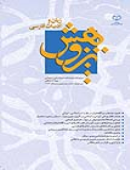"شب پره" و "سيوليشه"- دو نماد براي يك موقعيت تأويل دو شعر نمادين از نيمايوشيج
محورهای موضوعی : پژوهشهای ادبیات کلاسیک ایران
1 -
کلید واژه: هرمنوتيك تأويل نماد شعرنيما شب پره سيوليشه,
چکیده مقاله :
در تأويل شعرهاي نمادين نيما يوشيج، با اين پيش فرض روبرو هستيم كه تعدادي از اين شعرها داراي درونماية اجتماعي- سياسي است كه شاعر به دلايلي نميتوانسته يا نميخواسته آنها را به طور روشن و صريح بيان كند و براي ابلاغ آنها به نمادهاي شاعرانه متوسل شده است. نگارنده سعي دارد با استفاده از شيوههاي تأويل شلايرماخر و همفكرانش، به معنا و پيام مورد نظر مؤلّف هنگام سرودن شعر، نزديك شود. براي اين منظور، از طريق مطالعات مستمر و دقيق در زندگي، آثار، افكار و اوضاع اجتماعي- سياسي روزگار نيما و نيز راهنمايي خود متن، به عنوان يك اثر زباني، مدّعي است كه توانسته است تا حدودي به اين منظور دست يابد. در مقالة حاضر، علاوه بر تأويل دو شعر«شب پرة ساحل نزديك » و «سيوليشه»، به لحاظ نزديكي فضاي حاكم بر دو شعر، كه از تلنگر زدن كسي به شيشة پنجرة اتاق شاعر سخن ميگويند، و نيز از نحوة سخن گفتن و برخورد شاعربا هر دو مورد، نگارنده به اين نتيجه رسيده است كه نمادهاي «شب پرة ساحل نزديك» و «سيوليشه»، هر دو به موقعيّتي يكسان يا مشابه كه درآن شخصي با گرايشهاي كمونيستي، به اميد رخنه كردن درخانة نيما، به شيشة اتاق وي ميكوبد، اشاره دارند. اين رويكرد به شعرهاي نمادين نيما، به هيچ وجه به معني انكار رويكرد مخاطب محور به متون ادبي نيست؛ و نگارنده حتّي در مورد شعرهاي نمادين داراي پيامهاي اجتماعي- سياسي، تأويلهاي متفاوت را از ديدگاههاي مختلف ممكن ميداند.
In the symbolic paraphrase of Nima Youshij’s poetries, we already face this pre-assumption; that some of these poems have a social-political theme which the poet either could not or has chose not to express directly and clearly, therefore in order to convey these themes, he has resorted to poetic symbols. The author of this essay tries to approach the poet’s actual and intended concept and meaning as he created them through using the paraphrase methods of Schlamaikher (Shumaker) and his other fellow thinkers. For this purpose, by a constant and close study of the poet’s life, thoughts, works and the social-political situation related to Nima’s time, in addition to using the text as a guide, the researcher has reached this goal to a fair extent. In the present essay, two poems-“The Moth Close to the Beach” and “Siolishes” in which both enjoy a close atmosphere- and both mention someone tapping on the window of the poet’s room, are paraphrased. Also due to the manner in which the poet speaks in both cases, it is concluded that the symbols in “The Moth Close to the Beach” and “Siolishe”, both point to a similar situation or even the same case; where a person with communistic views hopes to creep in Nima’s house and so taps on the window of his house. This approach towards Nima’s symbolic works does not in any respect deny the reader-response approach towards literary texts, as the author of this essay finds it quite possible that even symbolic poems bear social and political motifs and therefore resemble various paraphrases within different approaches.


